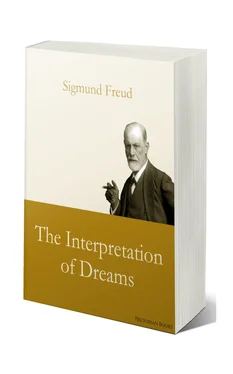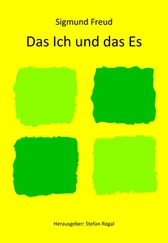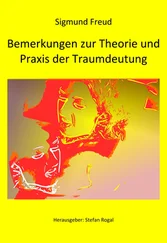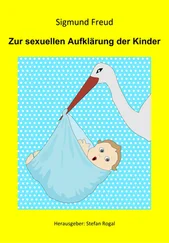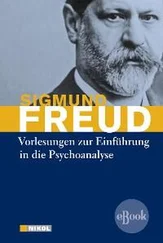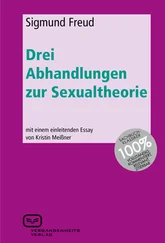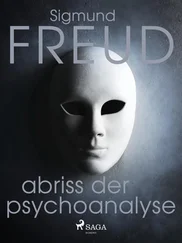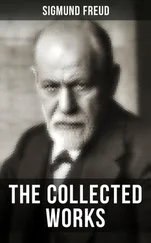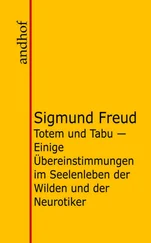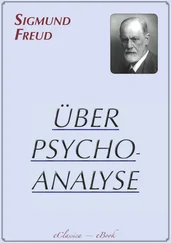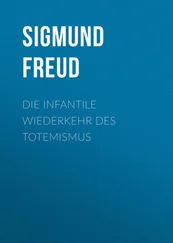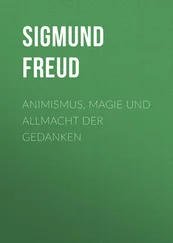The treatment of the physical stimuli by the dream phantasy surely cannot be considered purposeful. The phantasy plays a tantalising game with them, and represents the organic source which gives origin to the stimuli in the correspondent dream, in any plastic symbolism. Indeed Scherner holds the opinion, not shared by Volkelt and others, that the dream phantasy has a certain favourite representation for the entire organism; this representation would be the house. Fortunately, however, it does not seem to limit itself in its presentation to this material; it may also conversely employ a whole series of houses to designate a single organ, e.g., very long rows of houses for the intestinal excitation. On other occasions particular parts of the house actually represent particular parts of the body, as e.g., in the headache-dream, the ceiling of the room (which the dream sees covered with disgusting reptile-like spiders) represents the head.
Quite irrespective of the house symbolism, any other suitable object may be employed for the representation of these parts of the body which excite the dream. "Thus the breathing lungs find their symbol in the flaming stove with its gaseous roaring, the heart in hollow boxes and baskets, the bladder in round, bag-shaped, or simply hollowed objects. The male dream of sexual excitement makes the dreamer find in the street the upper portion of a clarinette, next to it the same part of a tobacco pipe, and next to that a piece of fur. The clarinette and tobacco pipe represent the approximate shape of the male sexual organ, while the fur represents the pubic hair. In the female sexual dream the tightness of the closely approximated thighs may be symbolised by a narrow courtyard surrounded by houses, and the vagina by a very narrow, slippery and soft footpath, leading through the courtyard, upon which the dreamer is obliged to walk, in order perhaps to carry a letter to a gentleman" (Volkelt, p. 39). It is particularly noteworthy that at the end of such a physically exciting dream, the phantasy, as it were, unmasks by representing the exciting organ or its function unconcealed. Thus the "tooth-exciting dream" usually ends with the dreamer taking a tooth out of his mouth.
The dream phantasy may, however, not only direct its attention to the shape of the exciting organ, but it may also make the substance contained therein the object of the symbolisation. Thus the dream of intestinal excitement, e.g., may lead us through muddy streets, the bladder-exciting dream to foaming water. Or the stimulus itself, the manner of its excitation, and the object it covets, are represented symbolically, or the dream ego enters into a concrete combination with the symbolisation of its own state, as e.g., when, in the case of painful stimuli, we struggle desperately with vicious dogs or raging bulls, or when in the sexual dream the dreamer sees herself pursued by a naked man. Disregarding all the possible prolixity of elaboration, a symbolising phantastic activity remains as the central force of every dream. Volkelt, in his finely and fervently written book, next attempted to penetrate further into the character of this phantasy and to assign to the psychical activity thus recognised, its position in a system of philosophical ideas, which, however, remains altogether too difficult of comprehension for any one who is not prepared by previous schooling for the sympathetic comprehension of philosophical modes of thinking.
Scherner connects no useful function with the activity of the symbolising phantasy in dreams. In the dream the psyche plays with the stimuli at its disposal. One might presume that it plays in an improper manner. One might also ask us whether our thorough study of Scherner's dream theory, the arbitrariness and deviation of which from the rules of all investigation are only too obvious, can lead to any useful results. It would then be proper for us to forestall the rejection of Scherner's theory without examination by saying that this would be too arrogant. This theory is built up on the impression received from his dreams by a man who paid great attention to them, and who would appear to be personally very well fitted to trace obscure psychic occurrences. Furthermore it treats a subject which, for thousands of years, has appeared mysterious to humanity though rich in its contents and relations; and for the elucidation of which stern science, as it confesses itself, has contributed nothing beyond attempting, in entire opposition to popular sentiment, to deny the substance and significance of the object. Finally, let us frankly admit that apparently we cannot avoid the phantastical in our attempts to elucidate the dream. There are also phantastic ganglia cells; the passage cited on p. 63 from a sober and exact investigator like Binz, which depicts how the aurora of awakening flows along the dormant cell masses of the cerebrum, is not inferior in fancifulness and in improbability to Scherner's attempts at interpretation. I hope to be able to demonstrate that there is something actual underlying the latter, though it has only been indistinctly observed and does not possess the character of universality entitling it to the claim of a dream theory. For the present, Scherner's theory of the dream, in its contrast to the medical theory, may perhaps lead us to realise between what extremes the explanation of dream life is still unsteadily vacillating.
(h) Relations between the Dream and Mental Diseases.—When we speak of the relation of the dream to mental disturbances, we may think of three different things: (1) Etiological and clinical relations, as when a dream represents or initiates a psychotic condition, or when it leaves such a condition behind it. (2) Changes to which the dream life is subjected in mental diseases. (3) Inner relations between the dream and the psychoses, analogies indicating an intimate relationship. These manifold, relations between the two series of phenomena have been a favourite theme of medical authors in the earlier periods of medical science—and again in recent times—as we learn from the literature on the subject gathered from Spitta, Radestock, Maury, and Tissié. Sante de Sanctis has lately directed his attention to this relationship. For the purposes of our discussion it will suffice merely to glance at this important subject.
In regard to the clinical and etiological relations between the dream and the psychoses, I will report the following observations as paradigms. Hohnbaum asserts (see Krauss, p. 39), that the first attack of insanity frequently originates in an anxious and terrifying dream, and that the ruling idea has connection with this dream. Sante de Sanctis adduces similar observations in paranoiacs, and declares the dream to be, in some of them, the "vraie cause déterminante de la folie." The psychosis may come to life all of a sudden with the dream causing and containing the explanation for the mental disturbances, or it may slowly develop through further dreams that have yet to struggle against doubt. In one of de Sanctis's cases, the affecting dream was accompanied by light hysterical attacks, which in their turn were followed by an anxious, melancholic state. Féré (cited by Tissié) refers to a dream which caused an hysterical paralysis. Here the dream is offered us as an etiology of mental disturbance, though we equally consider the prevailing conditions when we declare that the mental disturbance shows its first manifestation in dream life, that it has its first outbreak in the dream. In other instances the dream life contained the morbid symptoms, or the psychosis was limited to the dream life. Thus Thomayer70 calls attention to anxiety dreams which must be conceived as equivalent to epileptic attacks. Allison has described nocturnal insanity (cited by Radestock), in which the subjects are apparently perfectly well in the day-time, while hallucinations, fits of frenzy, and the like regularly appear at night. De Sanctis and Tissié report similar observations (paranoiac dream-equivalent in an alcoholic, voices accusing a wife of infidelity). Tissié reports abundant observations from recent times in which actions of a pathological character (based on delusions, obsessive impulses) had their origin in dreams. Guislain describes a case in which sleep was replaced by an intermittent insanity.
Читать дальше
